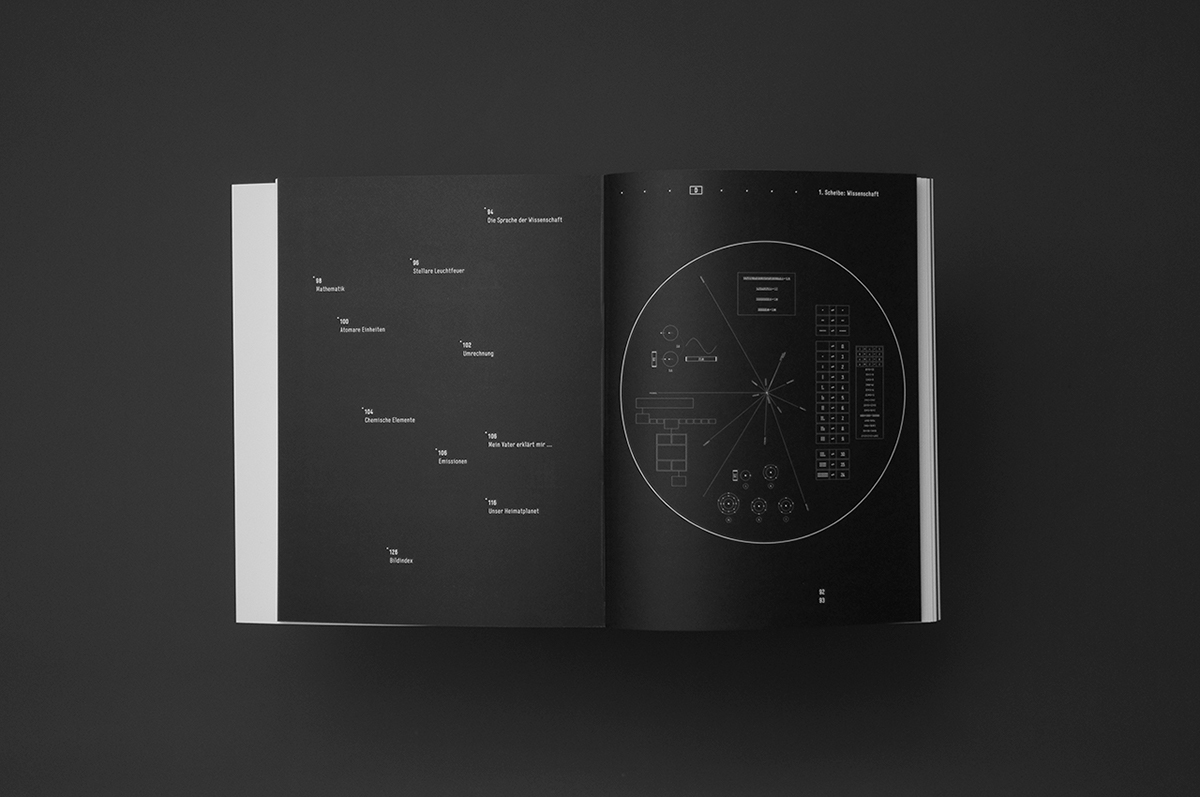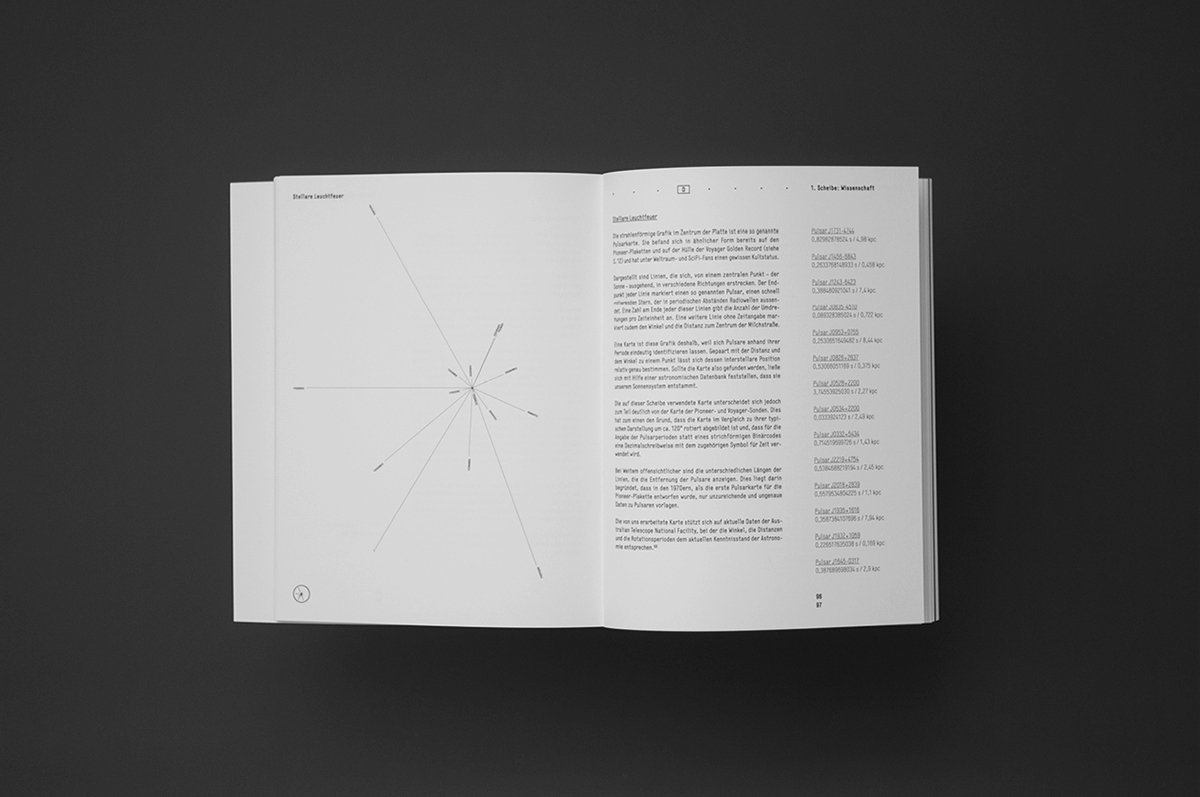Pictures from Earth
Humans are a species of explorers, who for centuries have gazed upon the stars and asked themselves whether there is some distant neighbor out there.
This is our proposal for a modern interstellar message. Its main purpose is to show a foreign intelligence who and where we are. However, it is also a snapshot of the present that shows that we humans have only this one planet to call home and that we carry the responsibility for our future.
Bachelor’s thesis by Patricia Klein and Yannic Sturm, University of Applied Sciences Mainz.
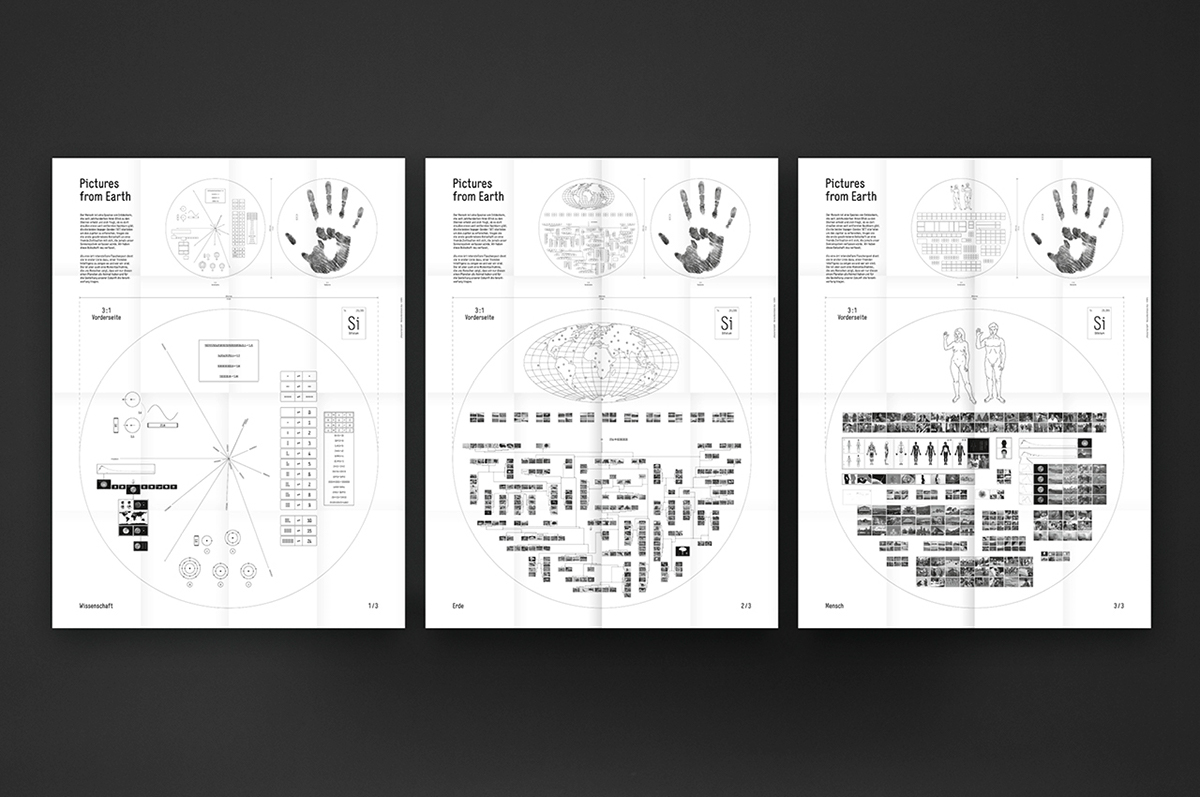
Schematics (each 96 x 72 cm)
Our work consists of three etched silicon disks that encompass the topics science, earth and humanity. With more than 500 Images we create a common vocabulary, present the planet that we live on and which beings it is populated with, and we describe the human species from its anatomy to its habitat and the way it shapes and changes its environment.
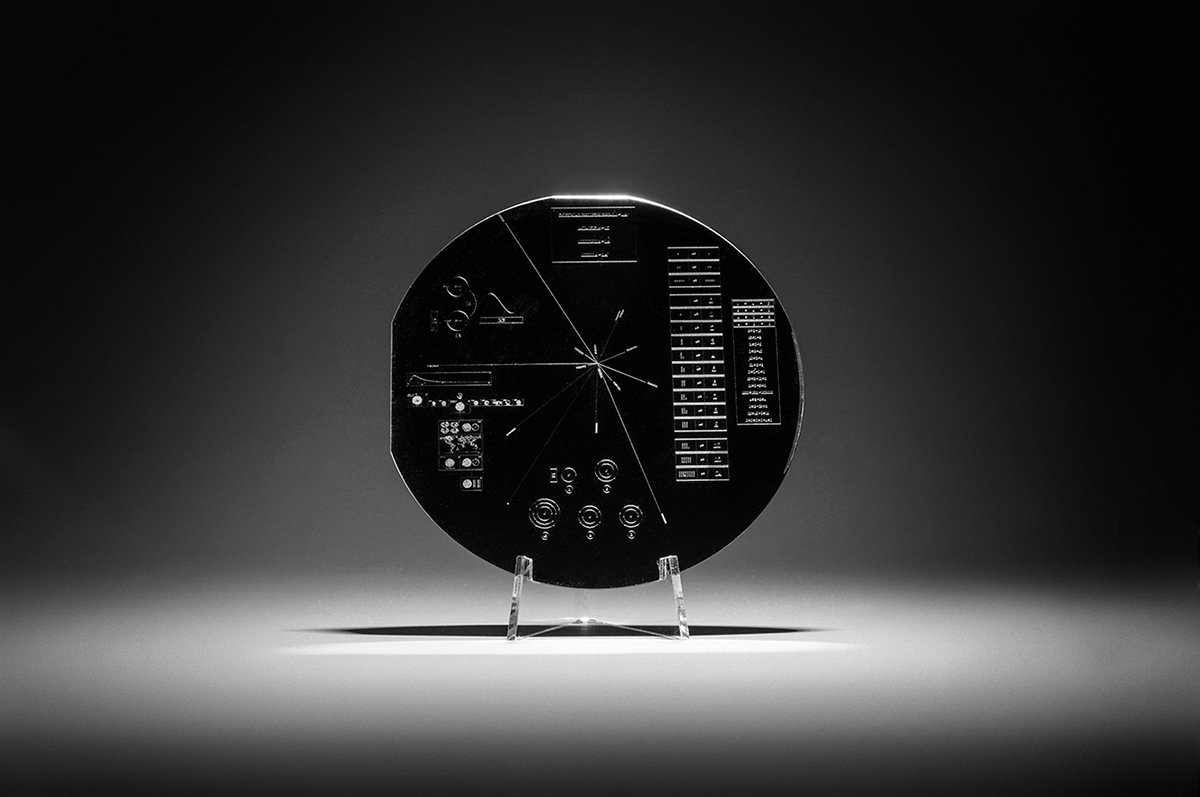
Prototype of the first disk at a scale of 1:2
As the medium for our message we chose a silicone wafer such as the ones used for microchips. Using a photolithographic process, these less than a millimeter thin disks can be provided with ultra-fine nanometer-scale structures. This makes it possible produce images directly in the medium as a relief, with a structural resolution of approximately 50,000 dpi.
1st Disk: Science

This first disk is the foundation for understanding the contents of the second and third disk. It provides basic information about our planetary system and our understanding of science.
In order to establish a decimal numeric system, mathematical operators and scientific units, we developed a limited special-purpose character set.
When using digits it is paramount that the glyphs can be distinguished from one another clearly, since the misinterpretation of even a single digit could gravely alter the meaning of a piece of information. The glyphs we developed differ from each other more distinctly than conventional ones and are also not rotation-dependent.
When using digits it is paramount that the glyphs can be distinguished from one another clearly, since the misinterpretation of even a single digit could gravely alter the meaning of a piece of information. The glyphs we developed differ from each other more distinctly than conventional ones and are also not rotation-dependent.
Image samples of the 1st disk
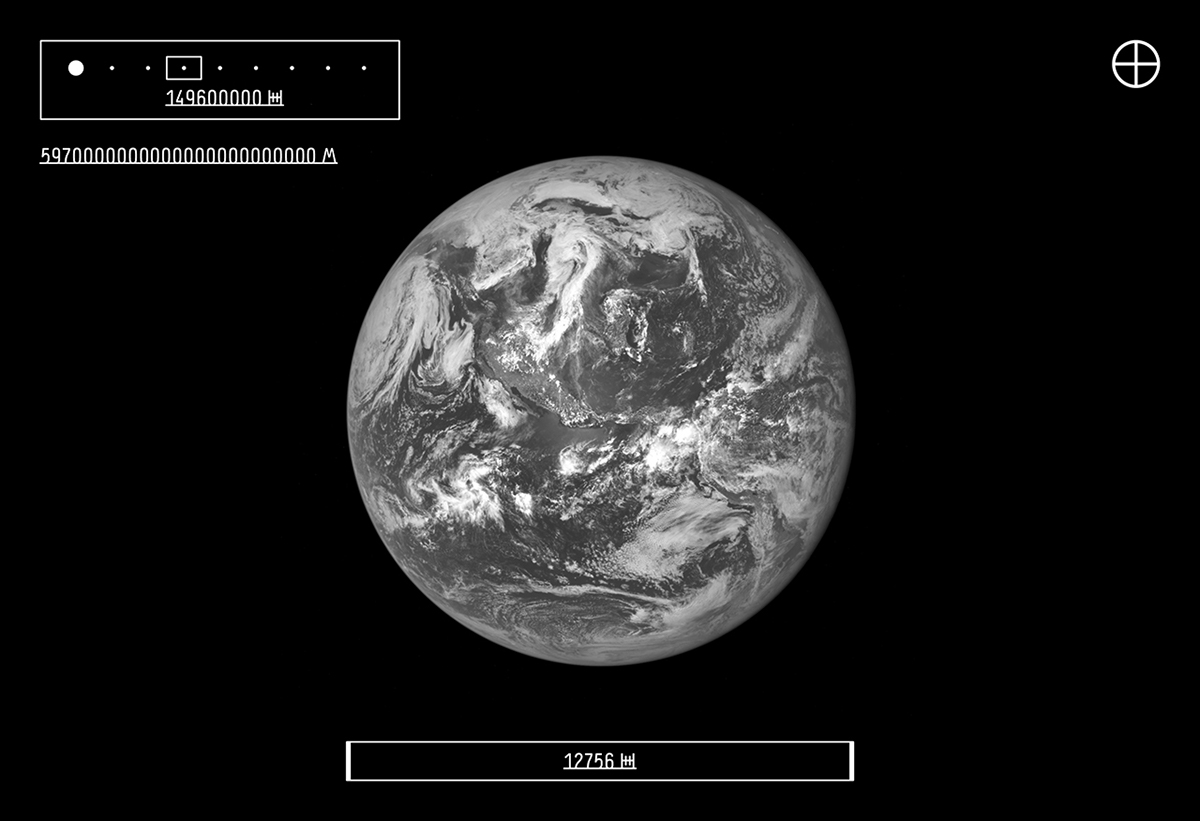
The smallest image format used is 4,5 x 3 mm
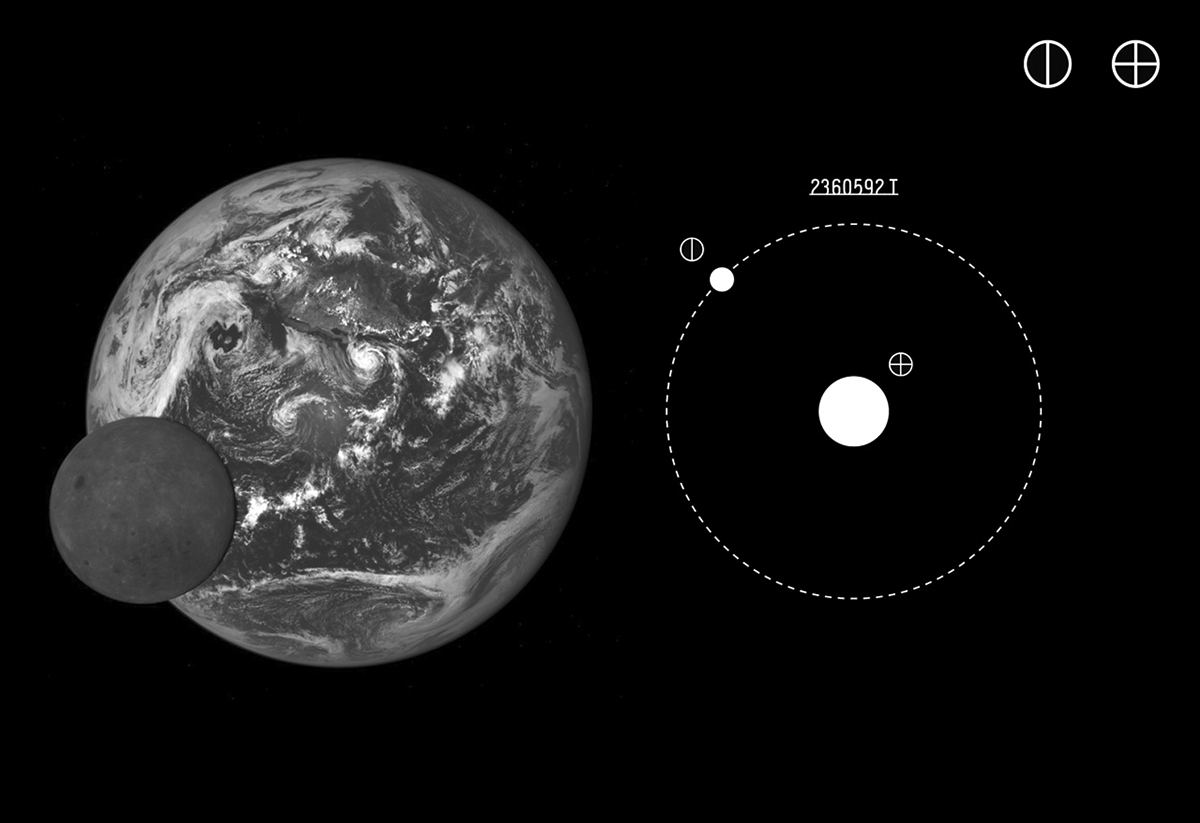
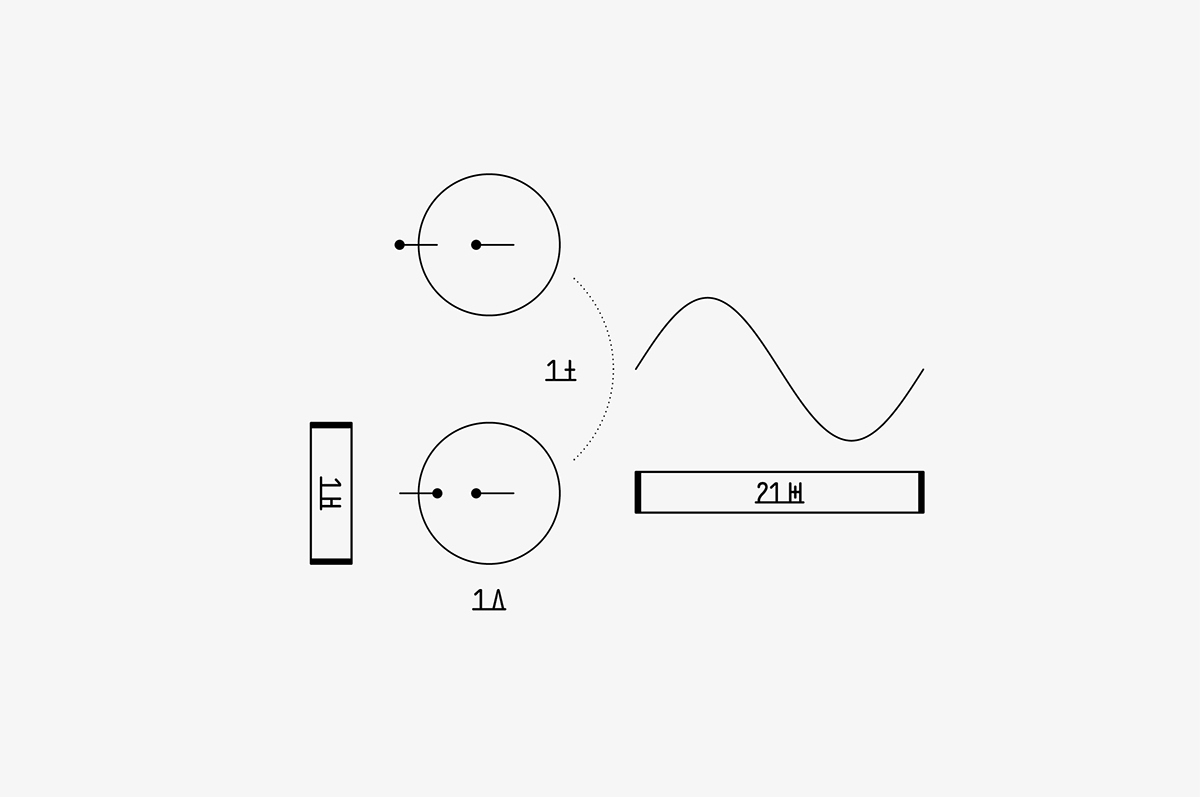
In a way, this graphic is the centerpiece of the first disk and shows the by far most abstract and – for non-scientists – most difficult concept to understand.
Using this so called hyperfine structure transition of the hydrogen atom – a process that seems abstract but can be universally observed in stars – we can introduce scientific units for length, time and mass.
2nd Disk: Earth

The second disk contains more in-depth information about earth, its geography including different biomes and the lifeforms that populate it.
It shows where humans can be found in the greater context of all life and displays a modern scientific understanding of ourselves, that assumes humanity to be part of nature and not its superior.
Thus the complete lower half of the disk is filled with a representative tree of life, showing 254 different species from different branches and their genetic relationship to each other.
Image samples of the 2nd disk

Image sample from the group „Biomes“, showing 11 different climate zones, each represented by four images.
Source: https://commons.wikimedia.org/wiki/File:Matanuska_Glacier_Panorama.jpg
Author: Frank K. from Anchorage, Alaska, USA
License: CC BY 2.0
Author: Frank K. from Anchorage, Alaska, USA
License: CC BY 2.0
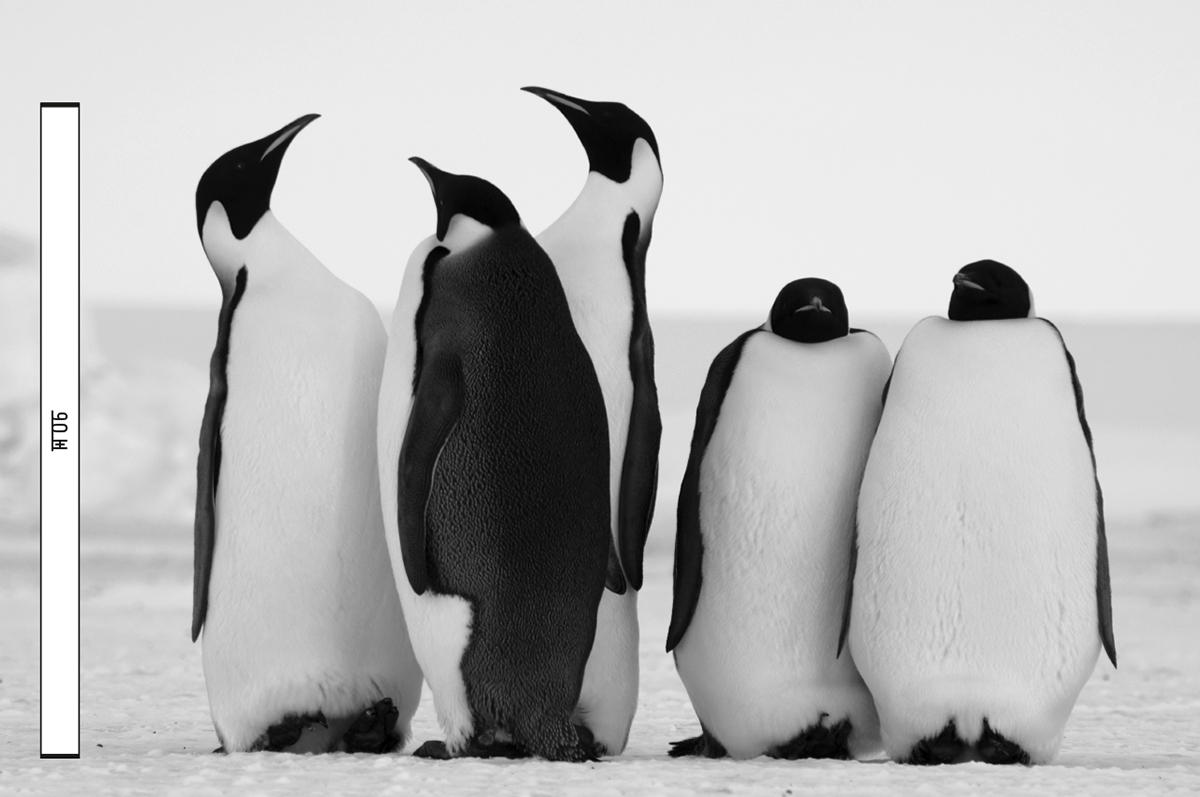
Source: https://www.flickr.com/photos/usgeologicalsurvey/16727829088/
Author: U.S. Geological Survey / William Link, USGS (Image obtained under NMFS Permit No: 1032-1917.)
License: Public Domain
Author: U.S. Geological Survey / William Link, USGS (Image obtained under NMFS Permit No: 1032-1917.)
License: Public Domain
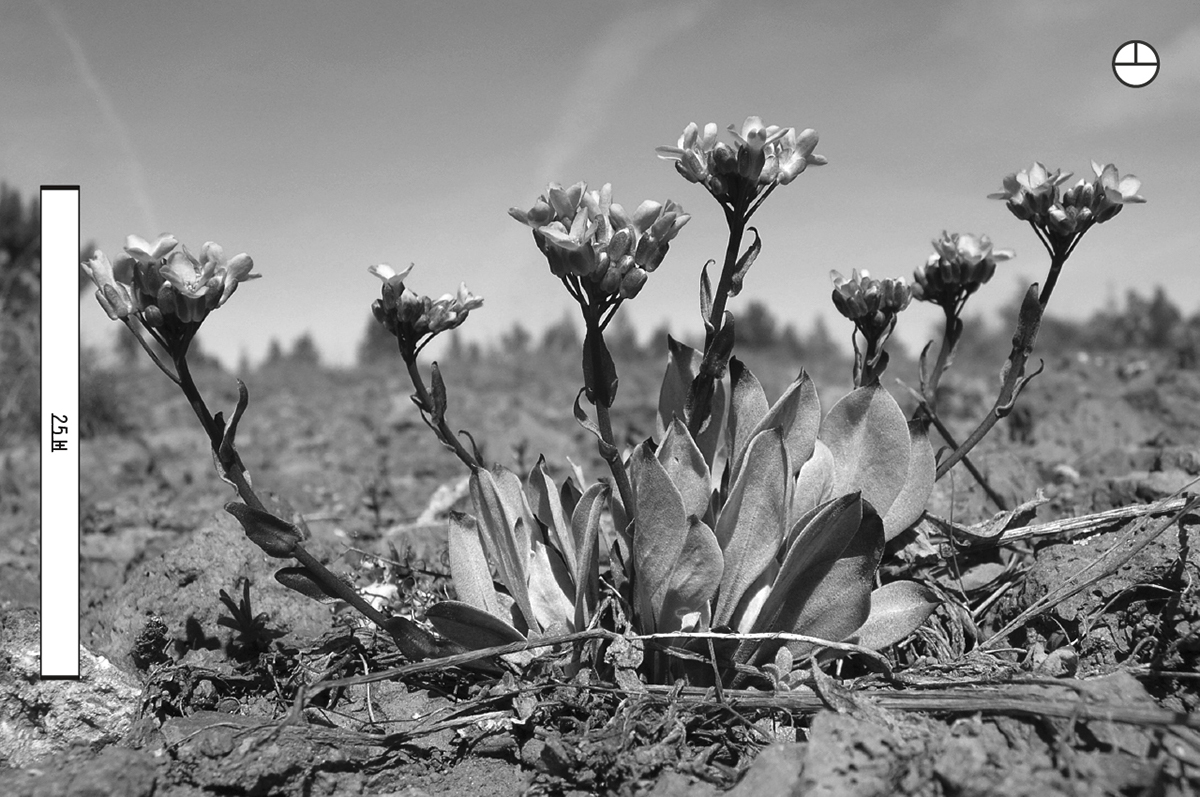
Source: https://de.wikipedia.org/wiki/Datei: MDF_Phoenicaulis_cheiranthoides_01.jpg
Author: Gauna
License: Public Domain
Author: Gauna
License: Public Domain
The decision which species to show in this tree of life was made through a number of differently weighted criteria. The primary goal was to show a broad spectrum and to display a representative number of lifeforms from every branch.
The species are roughly split into the categories Bacteria, Archaea and Eukaryota, which in turn is split into animals, plants and fungi.
3rd Disk: Mankind
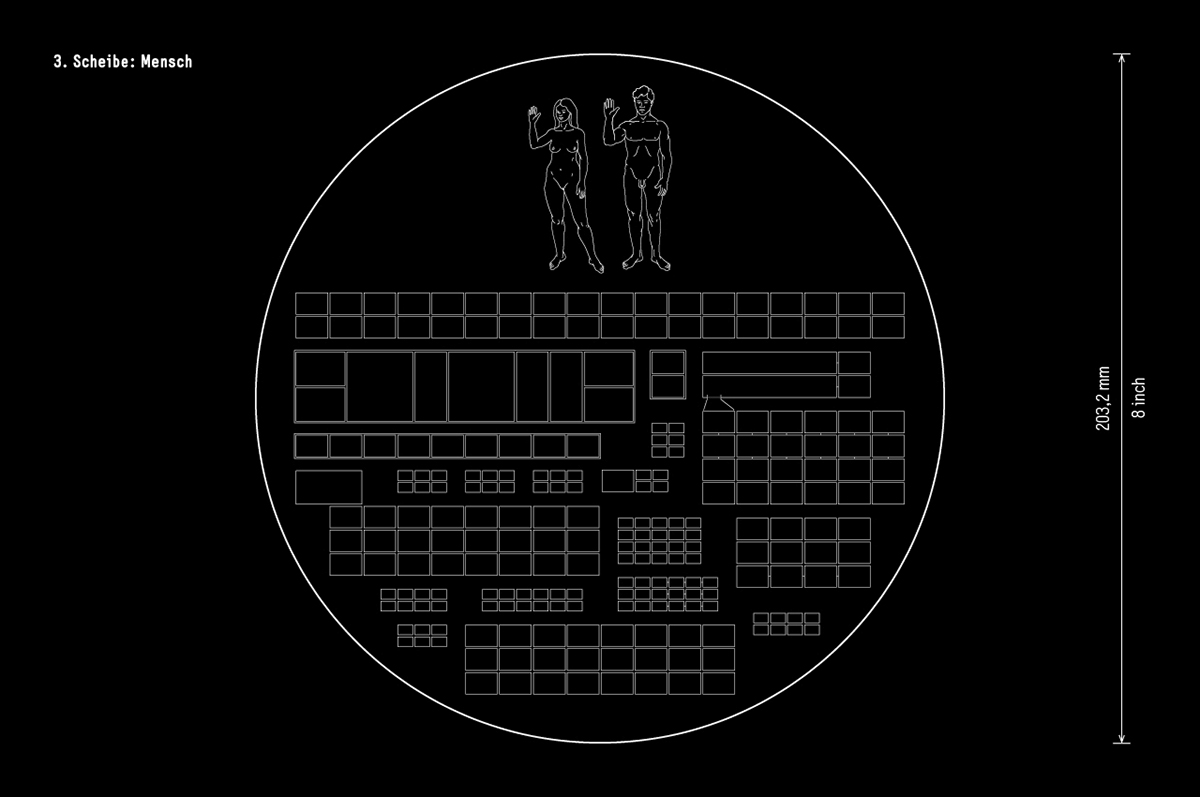
The third disk concerns mankind. It shows human anatomy, different phenotypes, behavioral patterns and technological achievements. As a model for this part we chose objective scientific descriptions such as the ones you would find in an encyclopedia.
Accordingly, we only show things that can be described objectively. This means that many psychological aspects could not be included. Examples for these are emotions and religion – even for people who are familiar with the concept, it can sometimes be hard to decipher if and why a person is laughing or crying.
Also, this disk does not introduce any kind of categorization within the human species, but shows people from different countries and with different looks next to each other without weighting one feature or another.
Image samples of the 3rd disk
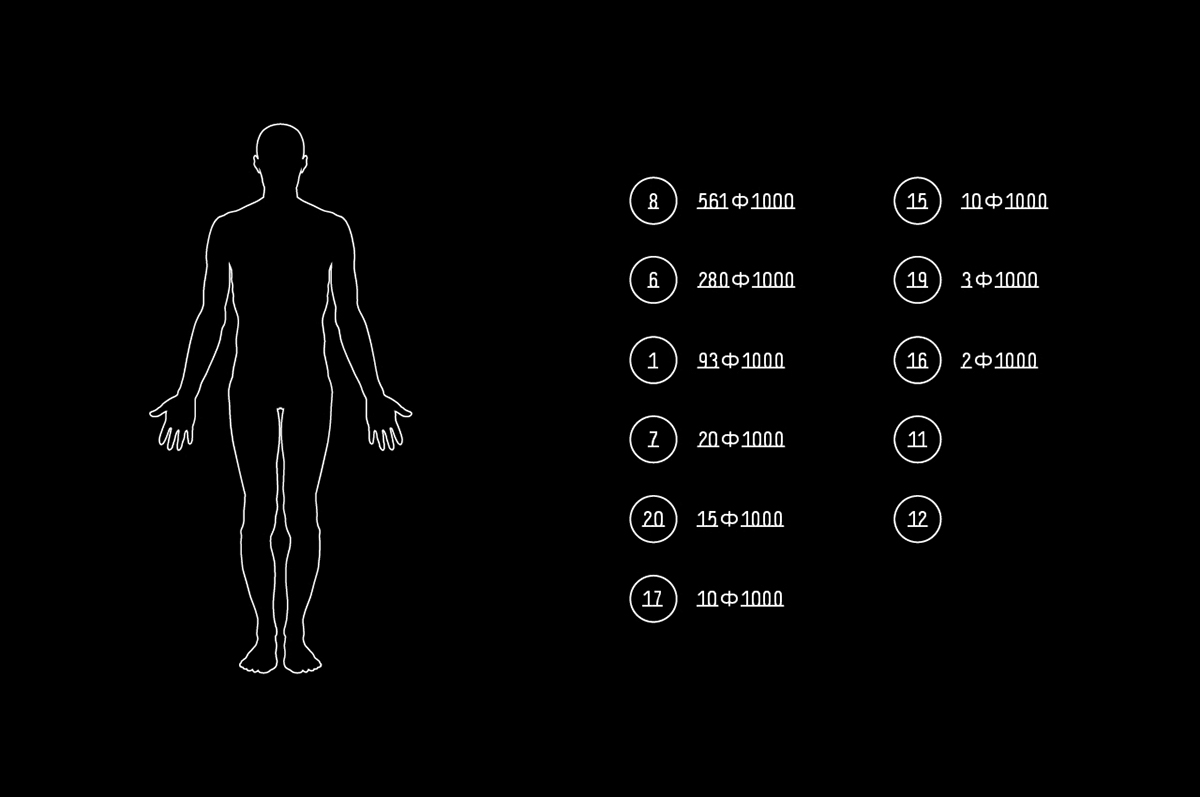
A large part of the 3rd disk concerns human anatomy. It begins with exemplary views of the front- and backside of each a woman and a man. Further images show the human skeleton, muscles, chemical composition and reproduction, amongst others.

Source: http://www.public-domain-image.com/free-images/people/panama-new-generation-of-embera-wounaan
Author: Fernando Alvarez, USAID
License: Public Domain
Author: Fernando Alvarez, USAID
License: Public Domain
Another large group of images, consisting of a total of 36 depictions, introduces the variety of humans and their physical traits.
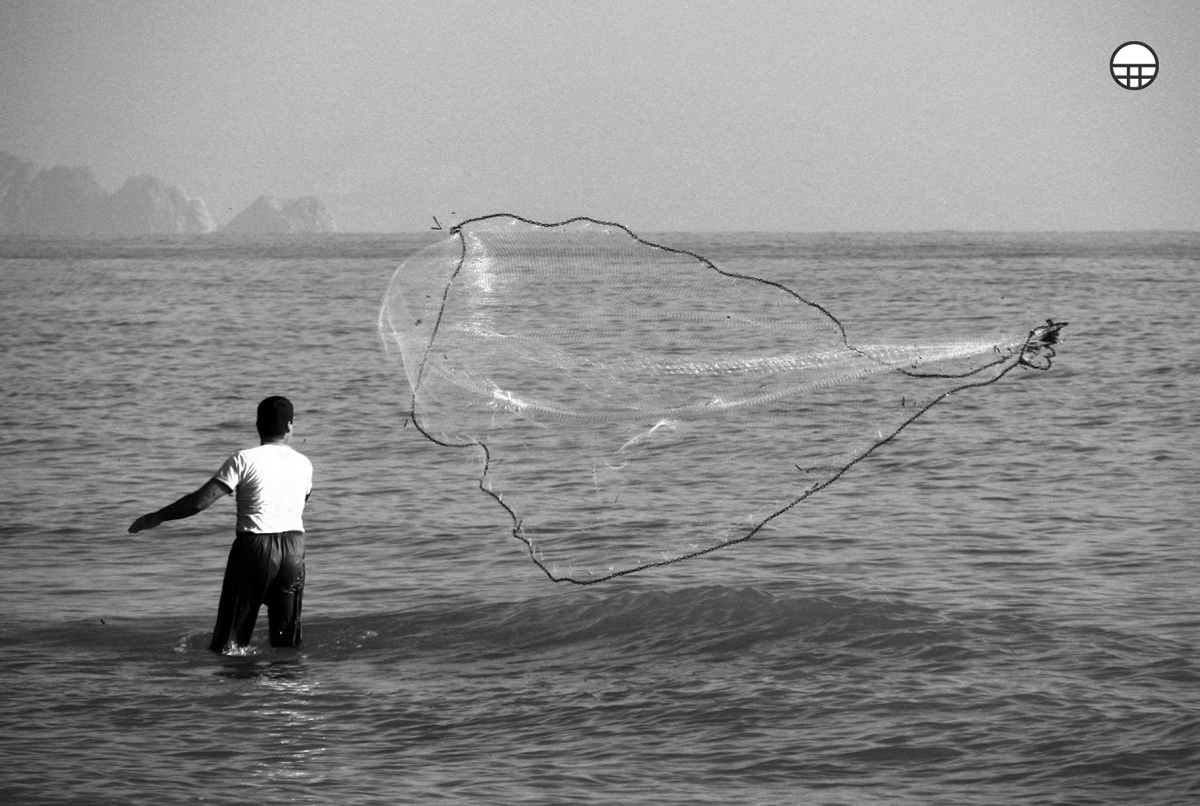
Source: https://commons.wikimedia.org/wiki/File:Payallarfishing.jpg
Author: ozgurmulazimoglu
License: CC BY 3.0
Author: ozgurmulazimoglu
License: CC BY 3.0
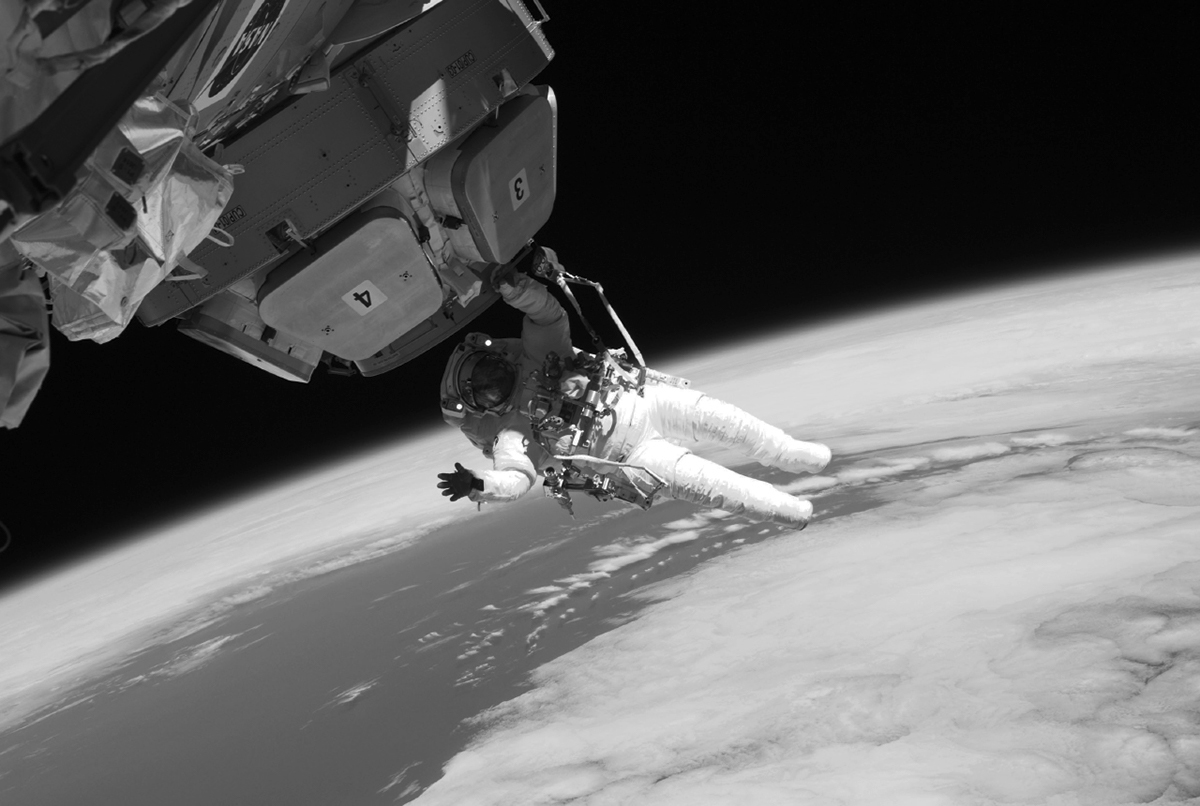
Source: https://commons.wikimedia.org/wiki/File:STS-130_EVA3_Nicholas_Patrick_1.jpg
Author: NASA
License: Public Domain
Author: NASA
License: Public Domain
Generally, we found it important to only use images that are public domain or are under a “free license“, allowing them to be used free of charge by anyone. The reason for this is that while we are the authors of this message, we aim to speak for all mankind. By using images of more than 400 authors we can achieve that goal.
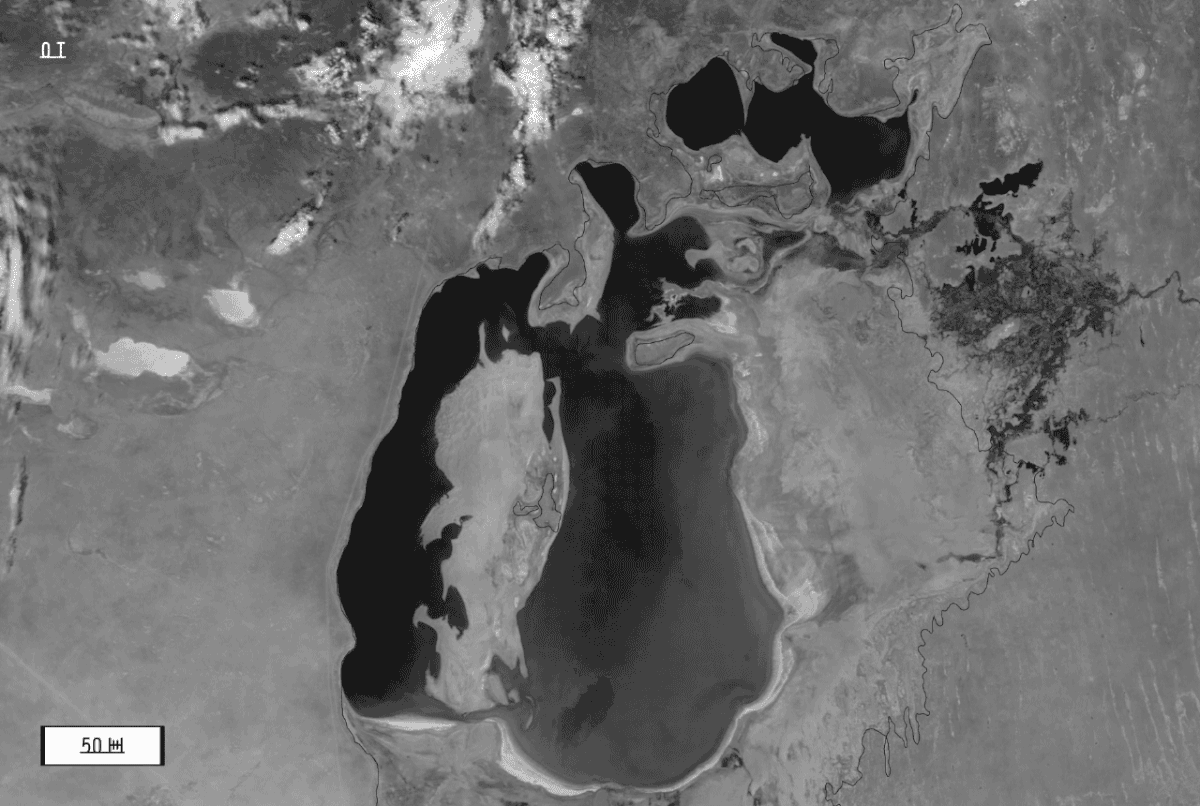
Series of images such as these show how the human species forms and changes our planet.
Source: http://earthobservatory.nasa.gov/Features/WorldOfChange/aral_sea.php?all=y
Author: NASA’s Earth Observatory
License: Public Domain
Author: NASA’s Earth Observatory
License: Public Domain
The third disk contains 214 images in different groups. Every group treats one aspect which describes us as a species.
The topics of these groups are, amongst others, nutrition, energy production, fine art and music, medicine technology and war.
The topics of these groups are, amongst others, nutrition, energy production, fine art and music, medicine technology and war.
Reference symbols
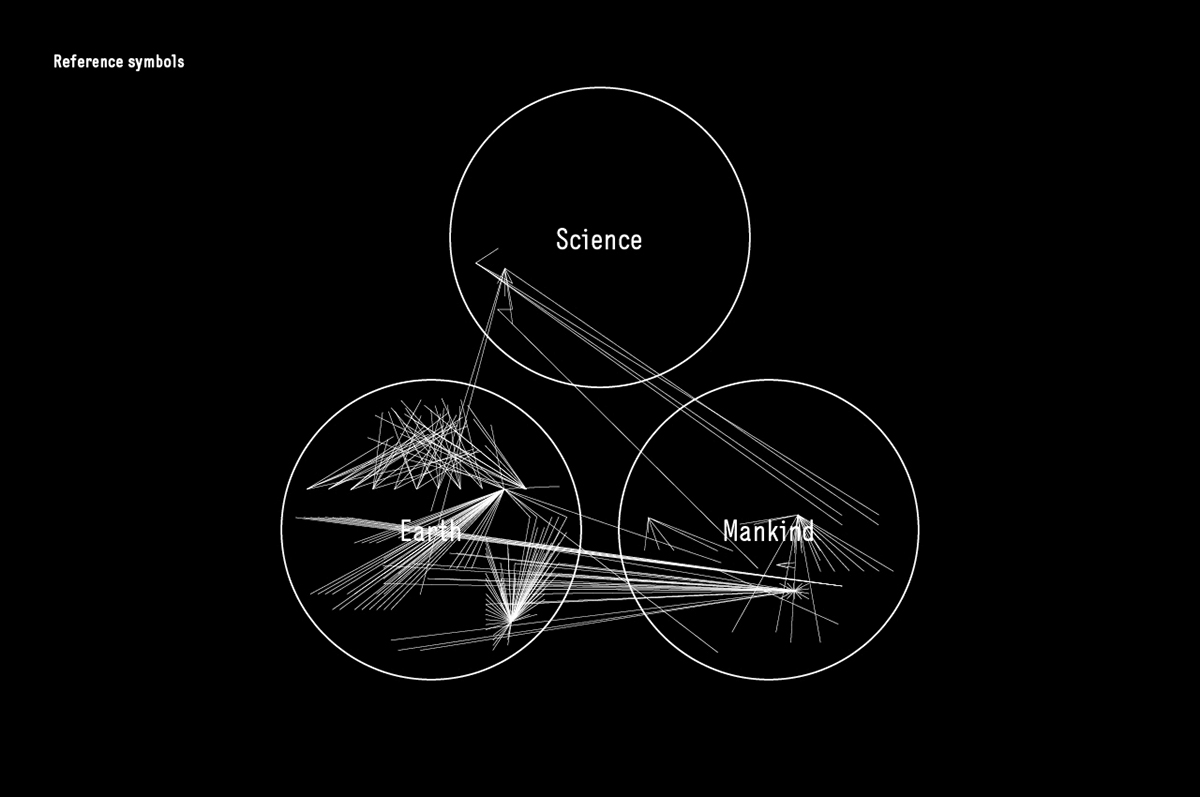
An important element of our concept are so called “reference symbols“. They allow the description of even somewhat complex matters by allowing us to create links – and thus relationships – between different images.
Through this system we can create connections between the three disks – something which would otherwise have only been possible through spacial proximity. That way we can for instance create connections between bacteria (2nd disk) and diseases (3rd disk), explicitly explain the function of our sensory organs or establish the fact that fish live in water.
Through this system we can create connections between the three disks – something which would otherwise have only been possible through spacial proximity. That way we can for instance create connections between bacteria (2nd disk) and diseases (3rd disk), explicitly explain the function of our sensory organs or establish the fact that fish live in water.
The structure of each image
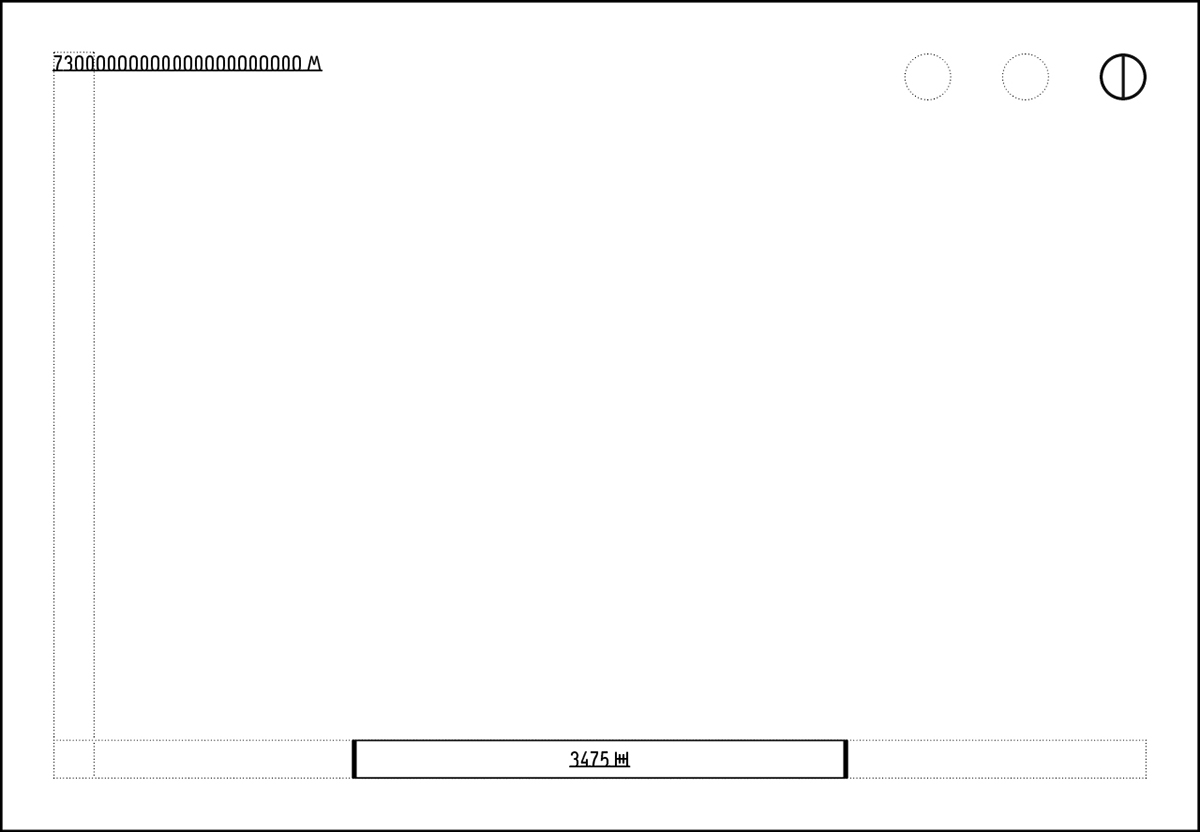
By using a strict structure for each photographic image, we make it easier to recognize particular elements, while at the same time showing that they are part of the image but not of object shown.
All images use a scale showing the size of the object. In the upper right corner there are reference symbols that allow linking particular images to one another.
All images use a scale showing the size of the object. In the upper right corner there are reference symbols that allow linking particular images to one another.
The Documentation

18 x 24 cm, 320 pages, swiss brochure with soft cover
We created a book to accompany the disks and to explain the process of their conception. It is a compact but extensive reader that introduces our project and explains the concept and the design of the disks.
This book is important, because, while the disks alone do provide ample information about humanity, they alone do not deliver insight into our creative process.
While the message is written in such a way that it can be understood universally, without knowledge of human writing, speech or culture, especially the first disk requires deep scientific knowledge.
Thus our book also serves to explain our concept of “semiotics for aliens“, which is indispensable for an interstellar message.
While the message is written in such a way that it can be understood universally, without knowledge of human writing, speech or culture, especially the first disk requires deep scientific knowledge.
Thus our book also serves to explain our concept of “semiotics for aliens“, which is indispensable for an interstellar message.

